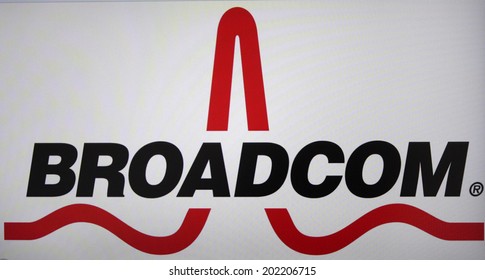VMware
Deutsche Telekom with AWS and VMware demonstrate a global enterprise network for seamless connectivity across geographically distributed data centers
Deutsche Telekom (DT) has partnered up with AWS and VMware to demonstrate what the German network operator describes as a “globally distributed enterprise network” that combines Deutsche Telekom connectivity services in federation with third party connectivity, compute, and storage resources at campus locations in Prague, Czech Republic and Seattle, USA and an OGA (Open Grid Alliance) grid node in Bonn, Germany.
The goal is to allow customers to book connectivity services directly from DT using a unified interface for the management of the network across its various locations.
The POC demonstrates how the approach supports an optimized resource allocation for advanced AI based applications such as video analytics, autonomous vehicles and robotics. The demonstration use case is video analytics with distributed AI inference.
PoC setup:
The global enterprise network integrates Deutsche Telekom private 5G wireless solutions, AWS services and infrastructure, VMware’s multi-cloud telco platform, OGA grid nodes and Mavenir’s RAN/Core functions. Two 5G Standalone (SA) private wireless networks deployed at locations in Prague, Czech Republic and Seattle, USA are connected to a Mavenir 5G Core hosted on AWS Frankfurt Region leveraging the framework of the Integrated Private Wireless on AWS program. The convergence of the global network with local high-speed 5G connectivity is enabled by the AWS backbone and infrastructure.
The 5G SA private wireless network with User Plane Function (UPF) and RAN hosted at the Seattle location, is operating on the VMware Telco Cloud Platform to enable low latency services. The VMware Service Management and Orchestration (SMO) is also deployed in the same location and serves as the global orchestrator. The SMO framework helps to simplify, optimize and automate the RAN, Core and its applications in a multi-cloud environment.
To demonstrate the benefit of this approach, the deployed POC used a video analytics application where cameras were installed at both Prague and Seattle locations and connected through a private wireless global enterprise network. Using this approach, operators were able to run AI components concurrently for immediate analysis and inferencing. This helps demonstrate the ability for customers to seamlessly connect devices across locations using the global enterprise network. Leveraging OGA architectural principles for Distributed Edge AI Networking, an OGA grid node was established on Dell infrastructure in Bonn facilitating seamless connectivity across the European locations.
Statements:
“As AI gets engrained deeper in the ecosystem of our lives, it necessitates equitable access to compute and connectivity for everyone, everywhere across the globe. Multi-national enterprises are seeking trusted and sovereign compute & connectivity constructs that underpin an equitable and seamless access. Deutsche Telekom is excited to partner with the OGA ecosystem for co-creation on these essential constructs and the enablement of the Distributed Edge AI Networking applications of the future,” – Kaniz Mahdi, Group Chief Architect and SVP Technology Architecture and Innovation at Deutsche Telekom.
“VMware is proud to support this Proof of Concept – contributing know-how and a modern and scalable platform that aims to offer the agility required in distributed environments. VMware Telco Cloud Platform is suited to deliver the compute resources on-demand wherever critical customer workloads are needed. As a founding member of the Open Grid Alliance, VMware embraces both the principles of this initiative and the opportunity to collaborate more deeply with fellow alliance members AWS and Deutsche Telekom to help meet the evolving needs of global enterprise customers.” – Stephen Spellicy, vice president, Service Provider Marketing, Enablement and Business Development, VMware
References:
https://www.telekom.com/en/media/media-information/archive/global-enterprise-network-1050910
Deutsche Telekom Global Carrier Launches New Point-of-Presence (PoP) in Miami, Florida
AWS Integrated Private Wireless with Deutsche Telekom, KDDI, Orange, T-Mobile US, and Telefónica partners
Deutsche Telekom Achieves End-to-end Data Call on Converged Access using WWC standards
Deutsche Telekom exec: AI poses massive challenges for telecom industry
Samsung and VMware Collaborate to Advance 5G SA Core & Telco Cloud
Samsung and VMware are continuing their collaboration to offer a powerful and comprehensive 5G solution—combining Samsung 5G Core and VMware Telco Cloud Platform 5G [1.]. This partnership makes it easier for telecom operators using the VMware platform to deploy Samsung’s 5G components. The validation supports Samsung’s ongoing attempts to boost its 5G core market share and further enhances VMware’s telecom efforts.
Note 1. VMware’sTelco cloud is a next-generation network architecture that combines software-defined networking, network functions virtualization, and cloud native technology into a distributed computing network. Since the network and the computing resources are distributed across sites and clouds, automation and orchestration are required.
………………………………………………………………………………………………………………………..
Joining Samsung’s expertise in 5G Core with the power of the VMware Telco Cloud, the combined 5G solution improves the performance and reliability of core networks. In addition, the collaboration offers increased agility and scalability for network infrastructure, enabling operators to rapidly adapt to changing market conditions and customer demands.
The companies have been involved in continuous testing, certification and validation efforts to ensure that Samsung’s 5G Core network functions are fully compatible with VMware Telco Cloud Platform 5G. After validation, Samsung received certification for its 5G Core network functions by the VMware Ready for Telco Cloud program, ensuring compatibility and reliability with VMware technology.
VMware Ready for Telco Cloud certification has been granted to Samsung’s Core network functions, including UPF, NSSF, SMF, AMF, and NRF. The Ready for Telco Cloud certification ensures that network functions are ready for deployment and lifecycle operations with VMware technology. These certified network functions will deliver improved performance, enhanced security features and increased agility and scalability for core networks.
VMware initially rolled out its overarching Telco Cloud Platform in early 2021, which itself was an expansion of its reorganized and repacked stack of technologies for network operators. It has since updated that specific platform as well as expanded its reach into other 5G markets like private 5G and mobile edge compute.
Specific to its work with Samsung, VMware began those efforts in late 2020. That move called for Samsung to integrate its network core, edge, and radio access network (RAN) offerings with VMware and for Samsung to extend its support for cloud-native architecture by adapting its suite of products for containerized network functions (CNFs) and virtual network functions (VNFs) on VMware’s software stack and network automation services.
earlier this year announced the first commercial collaboration with Samsung, which involved integrating Samsung’s virtualized RAN (vRAN) with VMware’s Telco Cloud Platform as part of Dish Network’s ongoing 5G network deployment.
That work built on Dish Network’s plan to deploy 24,000 Samsung open RAN-compliant radios and 5G vRAN software systems running on VMware’s platform that underlines Dish Network’s nascent 5G network.
The companies’ continued collaboration will accelerate the advancement of 5G Core networks and help operators to introduce innovative services that will lead to revenue growth and enhanced customer experiences.
References:
https://www.vmware.com/in/topics/glossary/content/telco-cloud.html
Broadcom confirms bid for VMware at a staggering $61 billion in cash and stock; “Cloud Native” reigns supreme
Broadcom has confirmed its plan to acquire VMware for USD 61 billion in cash and stock. VMware will become the new name of the Broadcom Software Group, with just under half the chipmaker’s revenues coming from software following completion of the takeover.
Building on its previous acquisitions of CA Technologies and the Symantec enterprise business, Broadcom will create a new division focused on enterprise infrastructure software and the VMware brand. A pioneer in virtualization technology, VMware has expanded to offer a wide range of cloud software, spanning application modernization, cloud management, cloud infrastructure, networking, security and anywhere workspaces. The company was spun off from Dell Technologies last year, regaining its own stock market listing.
VMware shareholders will have a choice of USD 142.50 cash or 0.2520 shares of Broadcom common stock for each VMware share. This is equal to a 44% premium on VMware’s share price the day before news of a possible deal broke. The cash and stock elements of the deal will each be capped at 50 percent, and Broadcom will also assume around USD 8 billion in VMware debt.
Michael Dell and Silver Lake, which own 40.2% and 10% of VMware shares respectively, have agreed already to support the deal, so long as the VMware Board continues to recommend the sale to Broadcom.
Broadcom has obtained commitments from banks for USD 32 billion in new debt financing for the takeover. The company pledged to maintain its dividend policy of paying out 50% of annual free cash flow to shareholders, as well as an investment-grade credit rating after the acquisition. Completion of the deal is expected to take at least a year, with a target of the end of Broadcom’s fiscal year in October 2023. VMware will have 40 days, until July 5th, to consider alternative offers.
The news was accompanied by the publication of quarterly results by the two companies. VMware reported revenues of USD 3.1 billion for the three months to April, up 3% from a year earlier, while net profit fell over the same period to USD 242 million from USD 425 million. Subscription and SaaS revenue was up 21%, leading to a subsequent fall in licensing revenue and higher costs for managing the transition to a SaaS model.
Over the same period, Broadcom revenues grew 23% to USD 8.1 billion, better than its forecast, and net profit jumped to USD 2.6 billion from USD 1.5 billion. Infrastructure software accounted for nearly USD 1.9 billion in revenue, up 5 percent year-on-year. With free cash flow at nearly USD 4.2 billion during the quarter and cash of USD 9.0 billion at the end of April, the company said it returned USD 4.5 billion to shareholders during the quarter in the form of dividends and buybacks. It also authorised a new share buyback program for up to USD 10 billion, valid until the end of December 2023.

The transaction is important to telecom network operators for a variety of reasons. Broadcom supplies some of the core chips for cable modems and other gadgets, including those that run Wi-Fi. Meanwhile, VMware is an active player in the burgeoning “cloud native” space, whereby network operators run their software in the cloud. Indeed, VMware supplies a core part of the cloud platform that Dish Network plans to use to run its forthcoming 5G network in the U.S.
In its press release, Broadcom explained the benefits of the transaction:
“By bringing together the complementary Broadcom Software portfolio with the leading VMware platform, the combined company will provide enterprise customers an expanded platform of critical infrastructure solutions to accelerate innovation and address the most complex information technology infrastructure needs. The combined solutions will enable customers, including leaders in all industry verticals, greater choice and flexibility to build, run, manage, connect and protect applications at scale across diversified, distributed environments, regardless of where they run: from the data center, to any cloud and to edge-computing. With the combined company’s shared focus on technology innovation and significant research and development expenditures, Broadcom will deliver compelling benefits for customers and partners.”
As Reuters reported, Broadcom doesn’t have a history of investing heavily in research and development, which could cast a cloud over VMware supporters hoping to use the company to navigate the tumultuous market for cloud networking. That is why the U.S. blocked Broadcom’s attempt to acquire Qualcomm in 2018.
“VMware should take heed of Symantec and CA Technologies’ experiences following their acquisition by Broadcom. CA Technologies reportedly saw a 40% reduction in U.S. headcount and employee termination costs were also high at Symantec,” analyst David Bicknell, with research and consulting firm GlobalData, said in a statement. “VMware currently has a strong reputation for its cybersecurity capability in safeguarding endpoints, workloads, and containers. Broadcom’s best shot at making this deal work is to let profitable VMware be VMware.”
References:
https://www.vmware.com/content/dam/digitalmarketing/vmware/en/pdf/company/vmware-broadcom.pdf



